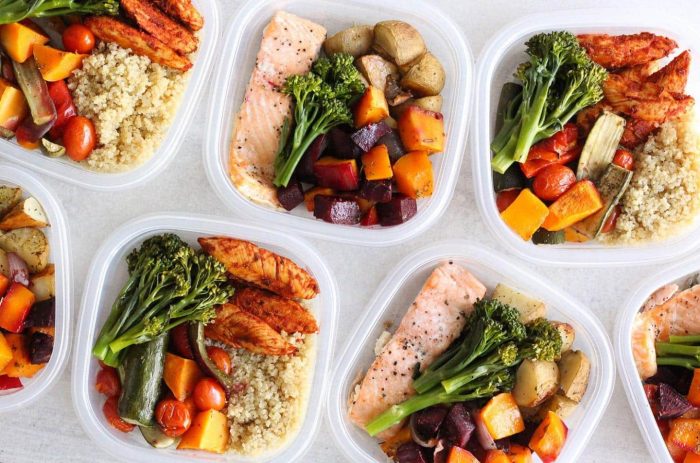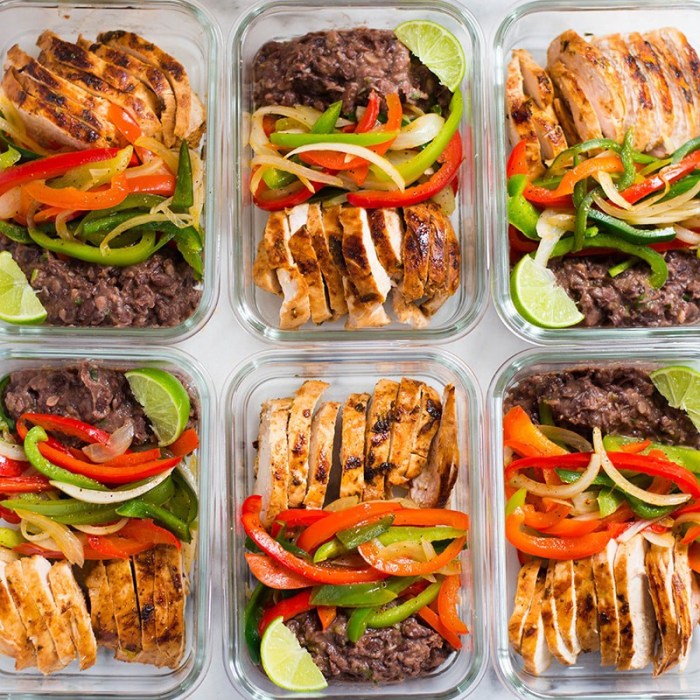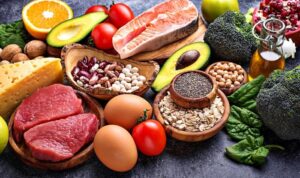Healthy meal prep is not just a trend, it’s a lifestyle choice that can revolutionize the way you eat. From saving time and money to maintaining portion control, this guide will take you through the essentials of preparing nutritious meals in advance. Get ready to level up your meal prep game!
Benefits of Healthy Meal Prep

Meal prepping is a game-changer when it comes to maintaining a healthy diet. Not only does it save time and money, but it also helps with portion control and calorie intake. By including a variety of nutrients in your meal prep, you can ensure that you are getting all the essential vitamins and minerals your body needs to thrive.
Saving Time and Money
Meal prepping allows you to plan your meals in advance, saving you time during the week. By buying ingredients in bulk and preparing meals in advance, you can also save money on groceries and avoid the temptation of ordering takeout or eating out.
Portion Control and Calorie Intake
When you meal prep, you have control over the portion sizes of your meals, making it easier to manage your calorie intake. This can be especially helpful for those looking to lose weight or maintain a healthy weight. By pre-portioning your meals, you can avoid overeating and stay on track with your health goals.
Well-Balanced Nutrients
A well-balanced meal prep should include a mix of protein, carbohydrates, healthy fats, fruits, and vegetables. For example, you can include lean proteins like chicken or tofu, whole grains like quinoa or brown rice, and a variety of colorful veggies to ensure you are getting all the nutrients your body needs to function at its best.
Meal Prep Planning
Planning your meals for the week ahead is key to staying on track with your healthy eating goals. By taking the time to plan out your meals, you can ensure that you have nutritious options ready to go when hunger strikes.
Creating a Weekly Meal Plan
- Start by choosing recipes that you enjoy and that are easy to prepare in batches.
- Consider your schedule for the week and plan meals that are quick and convenient for busy days.
- Include a variety of proteins, vegetables, whole grains, and healthy fats to ensure a balanced diet.
- Write out your meal plan for the week, including breakfast, lunch, dinner, and snacks.
Creating a Grocery List
- Review your meal plan and make a list of all the ingredients you will need for each recipe.
- Check your pantry and refrigerator to see what items you already have on hand.
- Organize your grocery list by category (produce, proteins, grains, etc.) to make shopping more efficient.
- Stick to your list at the store to avoid impulse purchases.
Choosing Meal Prep-Friendly Recipes
- Look for recipes that can be easily doubled or tripled to make multiple servings.
- Choose recipes that can be stored in the refrigerator or freezer and reheated without losing quality.
- Avoid recipes that are too complex or require a lot of last-minute prep to make meal prepping easier.
- Consider recipes that use similar ingredients to minimize waste and save money.
Essential Tools for Meal Prep
- Invest in a good set of meal prep containers in various sizes to store your meals.
- Consider purchasing a food scale to portion out servings and ensure accurate measurements.
- Stock up on basic kitchen tools like cutting boards, knives, and mixing bowls for meal prep.
- Use labels or markers to date and label your meals for easy identification in the fridge or freezer.
Meal Prep Cooking Techniques

When it comes to meal prep cooking techniques, efficiency is key. By utilizing certain methods and strategies, you can save time and effort in the kitchen while still preparing delicious and nutritious meals for the week ahead.
Batch Cooking for Meal Prep
Batch cooking is a game-changer when it comes to meal prepping. By preparing large quantities of food in advance, you can streamline the cooking process and have meals ready to go throughout the week. Not only does batch cooking save time, but it also helps with portion control and reduces food waste.
Tips for Cooking in Bulk
To maintain freshness when cooking food in bulk, consider dividing meals into individual portions and storing them in airtight containers. Additionally, labeling and dating the containers can help you keep track of what you have prepared and when it was made. When reheating meals, make sure to follow proper food safety guidelines to ensure they are safe to eat.
Different Cooking Methods for Meal Prep
When it comes to meal prep cooking techniques, there are several methods you can use to prepare food in advance. Baking, grilling, and steaming are all great options for cooking large quantities of food efficiently. These methods help preserve the flavor and nutrients of the ingredients while allowing you to cook multiple dishes simultaneously. Experiment with different cooking techniques to find what works best for your meal prep routine.
Storage and Preservation
Proper storage and preservation techniques are crucial in maintaining the freshness and quality of meal prepped food. By following the right methods, you can ensure that your meals stay delicious and safe to eat for an extended period of time.
Labeling and Organizing Meals
Organizing your prepped meals in the fridge or freezer is essential to avoid spoilage and maintain freshness. Here are some tips to help you keep everything in order:
- Label each container with the date of preparation to track freshness.
- Organize meals by type or day of the week for easy access.
- Store similar items together to optimize space and prevent cross-contamination.
Reheating Prepped Meals, Healthy meal prep
When reheating prepped meals, it’s important to retain their quality and flavor. Follow these tips for best results:
- Reheat meals in the oven or on the stovetop for even heating.
- Avoid microwaving meals for too long to prevent drying out the food.
- Add a splash of water or broth to help retain moisture during reheating.
Food Safety Practices
To ensure the safety of your meal prepped food, follow these food safety practices:
- Wash hands thoroughly before and after handling food.
- Use separate cutting boards for raw meat, poultry, and vegetables to prevent cross-contamination.
- Keep hot foods hot and cold foods cold to avoid bacterial growth.
